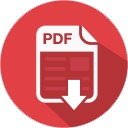After a historical overview of the phenomenon and classification of the various types of ascribed codices, this article provides evidence for the rejection of these ascriptions and that establishes the colophons as forgeries.
For nearly a thousand years, certain copies of the Qurʾān have been ascribed to such prominent Islamic figures as Imām ʿAlī and other Shīʿa Imāms. Although no evidence of ascription is found from the first three centuries, nearly two hundred copies of such manuscripts and fragments are found today around the world, especially in Shiite areas. After a historical overview of the phenomenon and classification of the various types of ascribed codices, this article provides evidence for the rejection of these ascriptions and that establishes the colophons as forgeries. The last part of the article includes a table of about two hundred Qurʾānic manuscripts ascribed to Shīʿa Imāms preserved in libraries and museums all over the world.
The transcriptions of some ancient Qurʾānic codices and fragments have been ascribed to certain notable figures, i.e. Shīʿa Imāms, the Companions of the Prophet, the Followers (tābiʿūn), and others. These ascriptions are sometimes suggested, or they are indicated by the colophons at the end of manuscripts. In the majority of cases, the veracity of these ascriptions is difficult to establish the transcriptions of some ancient Qurʾānic codices and fragments have been ascribed to certain notable figures, i.e. Shīʿa Imāms, the Companions of the Prophet, the Followers (tābiʿūn), and others. These ascriptions are sometimessuggested, or they are indicated by the colophons at the end of manuscripts. In the majority of cases, the veracity of these ascriptions is difficult to establish and there are reasons, indeed there is often evidence, of spurious colophons.
However, it should be borne in mind that, irrespective of the veracity or falsity of the ascriptions, these codices are highly valuable and important historical documents in themselves and are useful in the current research on the history of the transmission of the Qurʾān. If we were able to categorically establish the ascription of a single ancient codex of the Qurʾān to, say, Imām ʿAlī or to ʿUthmān b. ʿAffān, we would be able to obtain much more accurate and detailed information on the history of the Qurʾān, in particular regarding the early decades of the emergence of Islam. The fact that such valuable knowledge is not available does not mean that we should ignore the merits and potential of these documents or treat them as mere museum pieces.
Bibliographic Information
Title: The Qurʾānic Codices and Fragments Ascribed to Imām ʿAlī and Other Shīʿa Imāms: Forged Colophons or Historical Truths?
Author(s): Morteza Karimi-Nia
Published in: Journal of Islamic Manuscripts, Volume 14: Issue 2-4 .
Language: English
Length: 45 Pages
 Ijtihad Network Being Wise and Faithful Muslim in the Contemporary World
Ijtihad Network Being Wise and Faithful Muslim in the Contemporary World

